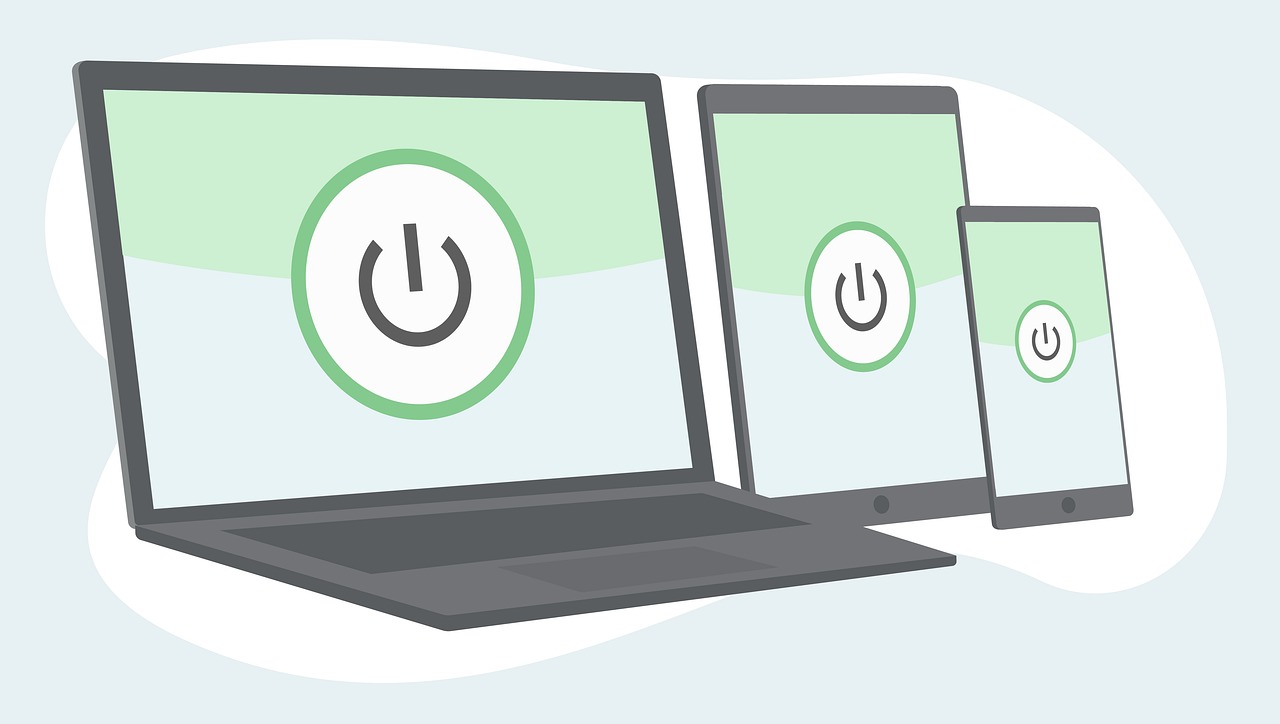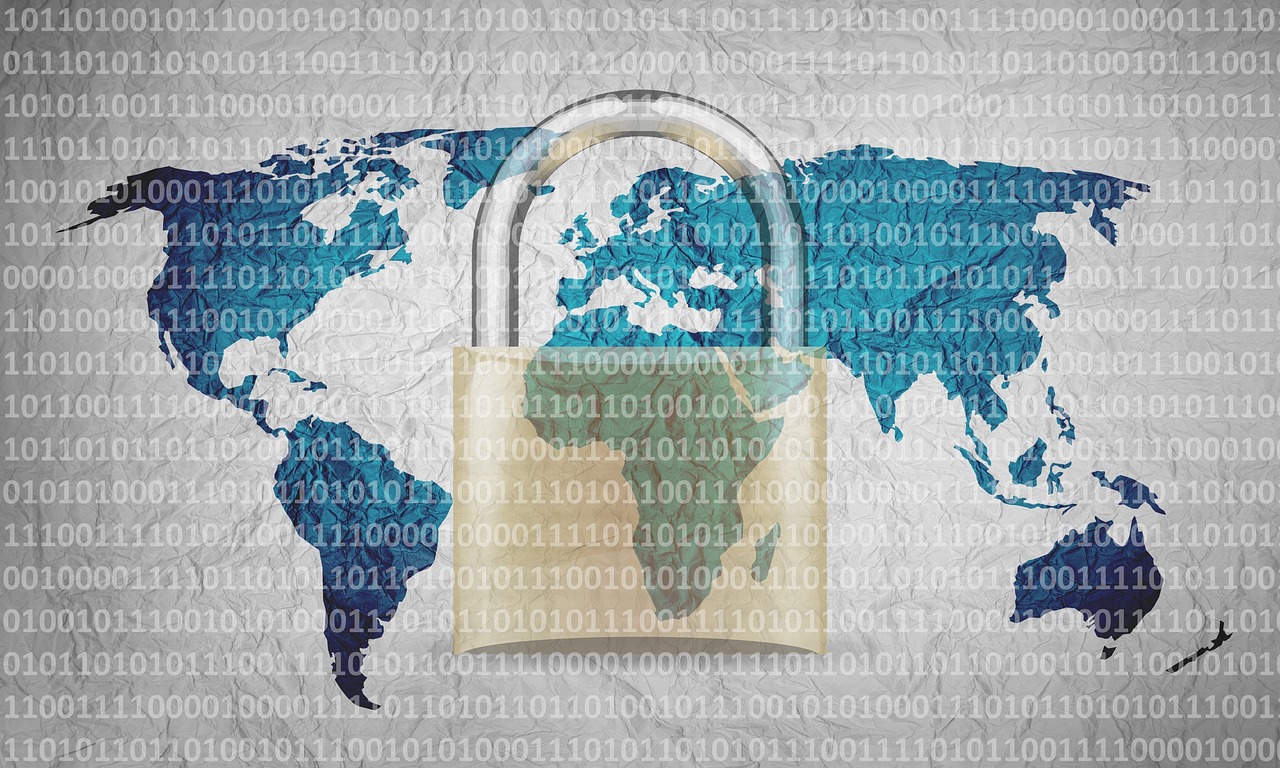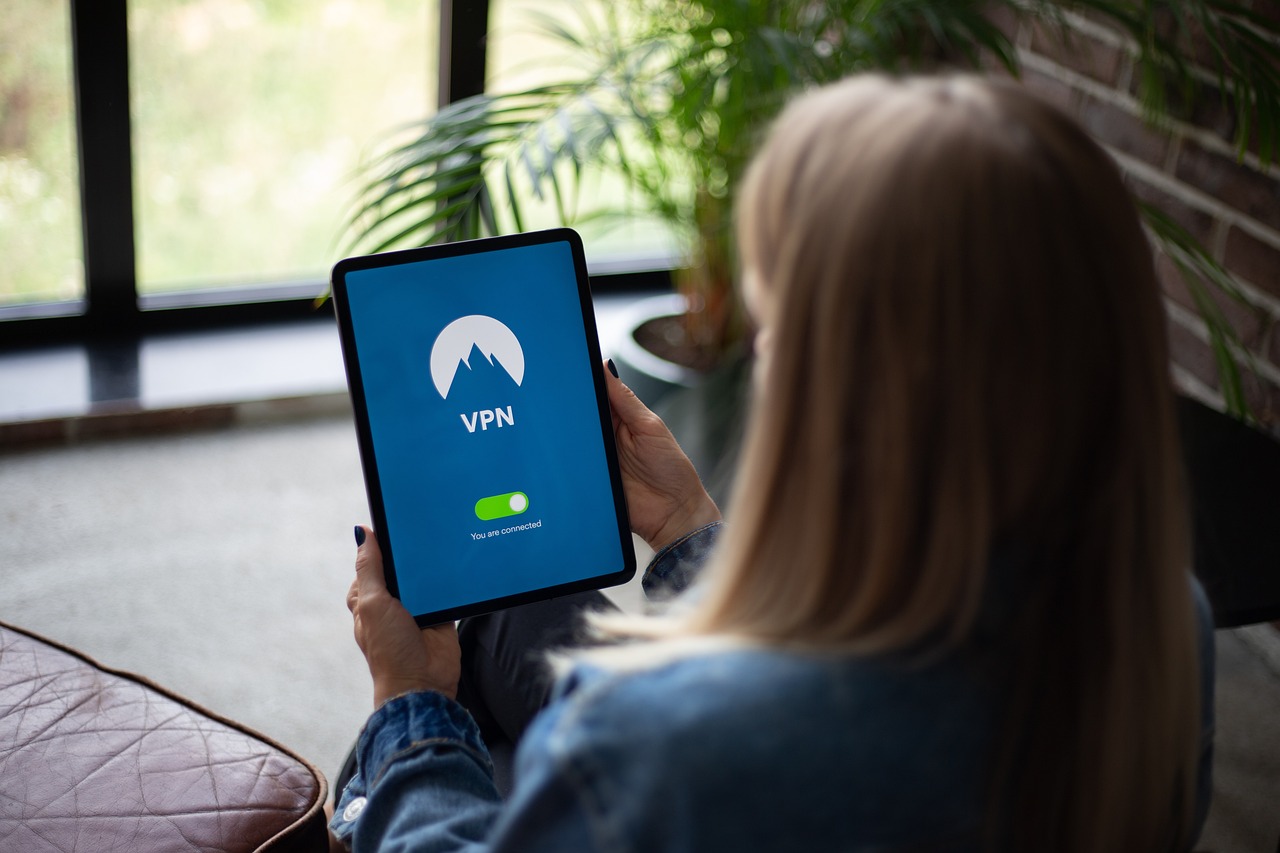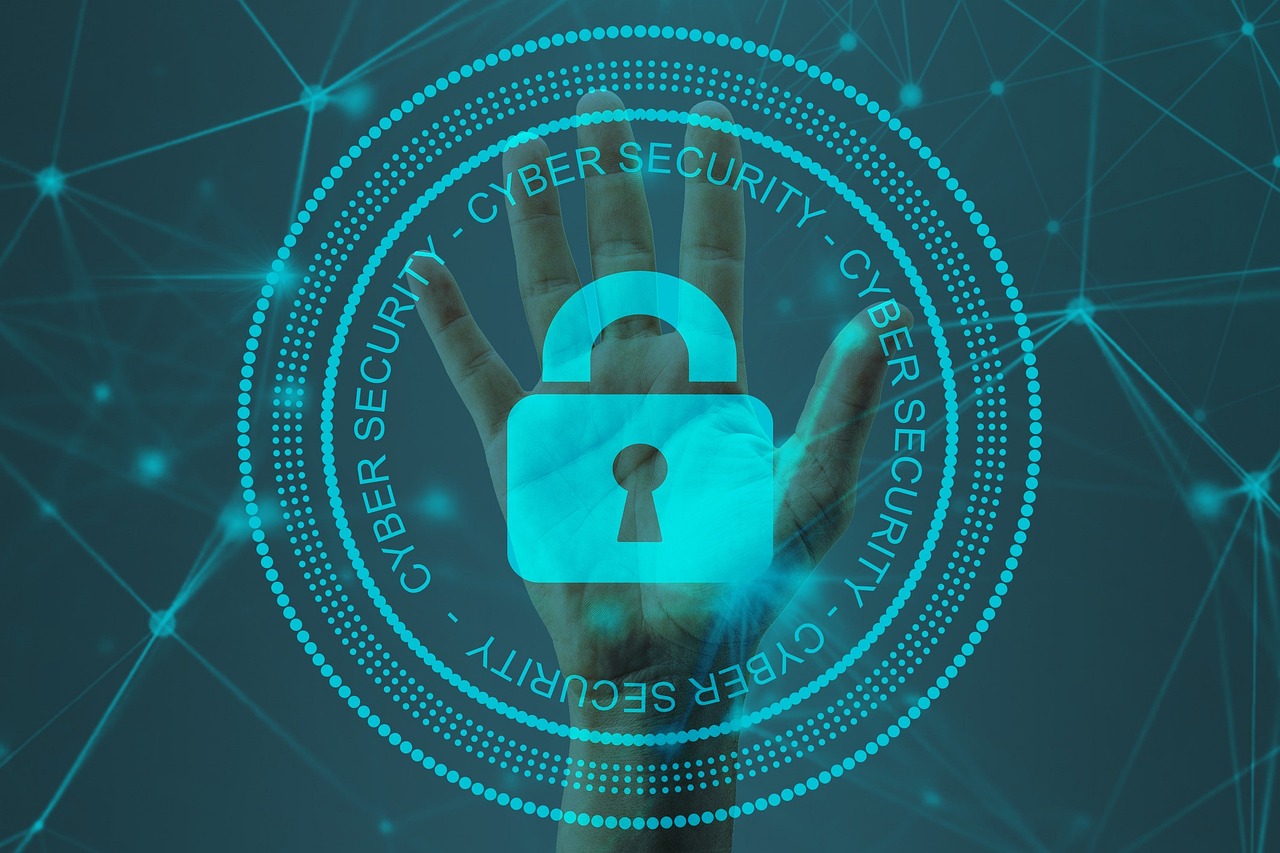Cybersecurity for Personal Trainers and Gyms
In today's digital age, the fitness industry is not just about lifting weights and running on treadmills; it’s also about protecting sensitive information. Personal trainers and gyms collect a wealth of data from their clients, including personal details, medical histories, and financial information. With this valuable data comes a significant responsibility to ensure it is kept safe from cyber threats. As fitness professionals, understanding the importance of cybersecurity is crucial not only for protecting your business but also for maintaining the trust and confidence of your clients. Let's dive into why cybersecurity matters in the fitness world and explore some best practices to keep your data secure.
The fitness industry is increasingly becoming a target for cybercriminals. Personal trainers and gyms face various cyber threats, including:
- Data Breaches: Unauthorized access to sensitive client information can lead to devastating consequences.
- Phishing Attacks: Cybercriminals often impersonate legitimate entities to trick individuals into revealing personal information.
- Ransomware: This malicious software can lock you out of your own systems until a ransom is paid, posing a severe risk to business operations.
These threats highlight the need for constant vigilance and proactive measures to safeguard client information. The reality is that a single data breach can ruin your reputation and lead to financial loss, making it imperative to take cybersecurity seriously.
Data protection is not just a technical requirement; it’s a fundamental aspect of maintaining client trust and fulfilling legal obligations. When clients share their personal and financial information, they expect it to be handled with care. Failing to protect this data can result in significant repercussions, including legal penalties and loss of clientele. In the fitness industry, where relationships are built on trust, ensuring the security of client information is paramount.
Maintaining client confidentiality is both a legal and ethical obligation for personal trainers. Clients trust you with their most sensitive information, and it’s your duty to keep it secure. Here are some best practices:
- Limit Access: Only allow access to sensitive information to those who absolutely need it.
- Use Secure Systems: Utilize secure software solutions that offer encryption and other security features.
- Educate Clients: Inform clients about how their data is used and the measures taken to protect it.
By implementing these practices, trainers can create a safe environment that fosters trust and loyalty among clients.
Using secure communication channels is vital for protecting client information. Opt for encrypted messaging apps and secure email services to minimize the risk of data interception. Here are some tips for implementing these practices:
- Choose Encryption: Always opt for platforms that offer end-to-end encryption.
- Regularly Update Communication Tools: Ensure that your communication tools are up-to-date to protect against vulnerabilities.
Keeping software and applications updated is essential for protecting against vulnerabilities. Cybercriminals often exploit outdated software to gain unauthorized access. Regular updates not only improve functionality but also patch security holes that could be targeted. Make it a habit to check for updates frequently and encourage your team to do the same.
Educating employees about cybersecurity risks is key to preventing incidents. A well-informed team is your first line of defense against cyber threats. Implement regular training sessions to keep your staff updated on the latest security protocols and how to recognize potential threats. Encourage a culture of vigilance where everyone feels responsible for safeguarding client information.
To effectively protect client data, personal trainers and gyms must implement robust security protocols. This includes:
- Password Management: Use strong, unique passwords and consider implementing a password manager.
- Access Controls: Ensure that only authorized personnel have access to sensitive information.
- Data Encryption: Encrypt sensitive data both in transit and at rest to prevent unauthorized access.
Implementing access control measures ensures that only authorized personnel can access sensitive information. Consider using role-based access controls, where access is granted based on an individual's role within the organization. This minimizes the risk of unauthorized access and enhances overall security.
Having an incident response plan in place is critical for minimizing damage in case of a cyber attack. An effective response strategy should include:
- Identification: Quickly identify the nature and scope of the incident.
- Containment: Take immediate steps to contain the breach and prevent further access.
- Recovery: Restore systems and data to normal operations while ensuring that vulnerabilities are addressed.
Compliance with data protection regulations, such as GDPR and HIPAA, is essential for fitness organizations. These regulations outline the legal requirements for handling sensitive information and protecting client privacy. Understanding your legal obligations is crucial for avoiding penalties and maintaining a good reputation.
Personal trainers and gyms must understand their legal obligations regarding data protection. Familiarize yourself with relevant laws and regulations affecting the fitness industry to ensure compliance. This knowledge will help you navigate the complexities of data protection and avoid costly mistakes.
Conducting regular compliance audits helps identify gaps in security and ensures adherence to regulations. These assessments should be routine and involve a thorough review of your data protection practices. By staying proactive, you can address potential issues before they become significant problems.
Q: What should I do if I suspect a data breach?
A: Immediately isolate affected systems, notify your IT team, and follow your incident response plan.
Q: How often should I update my software?
A: Regularly check for updates at least once a month, or set automatic updates where possible.
Q: What are the key components of a cybersecurity training program?
A: Focus on recognizing phishing attempts, using secure communication, and understanding the importance of data protection.

Understanding Cyber Threats
In today’s digitally driven world, personal trainers and gyms are not just places for physical transformation, but also custodians of sensitive client information. With the increasing reliance on technology, understanding cyber threats is crucial for anyone in the fitness industry. These threats come in various forms, each posing unique risks to both the business and its clients. Imagine the chaos that could ensue if a gym’s client list, complete with personal and financial details, fell into the wrong hands. It's not just about losing data; it's about losing trust.
One of the most alarming threats is a data breach. This occurs when unauthorized individuals gain access to confidential information. For gyms, this could mean exposure of client health records, payment information, and personal identification details. The fallout from a data breach can be catastrophic, leading to financial loss, legal repercussions, and a tarnished reputation. According to recent studies, over 70% of small businesses that experience a significant data breach close down within a year. This statistic should send shivers down the spine of any personal trainer or gym owner.
Another common threat is phishing attacks, where cybercriminals attempt to trick individuals into providing sensitive information, such as login credentials or financial details. These attacks can be particularly deceptive, often masquerading as legitimate communications from trusted sources. For example, a personal trainer might receive an email that appears to be from their gym's software provider, asking them to verify their account details. Falling for such a trap can lead to unauthorized access to sensitive client data.
Ransomware is yet another formidable threat. This malicious software encrypts a victim's files, rendering them inaccessible until a ransom is paid. For gyms, this could mean losing access to essential client records, workout plans, and billing information. The implications of such an attack extend beyond immediate financial loss; it can disrupt operations, damage client relationships, and lead to significant recovery costs.
To paint a clearer picture, here’s a brief overview of the most prevalent cyber threats faced by personal trainers and gyms:
| Cyber Threat | Description | Potential Impact |
|---|---|---|
| Data Breach | Unauthorized access to confidential information. | Financial loss, legal issues, loss of client trust. |
| Phishing Attacks | Deceptive communications tricking individuals into revealing sensitive information. | Unauthorized access, identity theft. |
| Ransomware | Malicious software that encrypts files, demanding payment for access. | Operational disruption, financial loss, data recovery costs. |
In conclusion, the fitness industry must remain vigilant against these cyber threats. Ignoring them is not an option; it’s akin to leaving the front door wide open while hoping no one will walk in. Personal trainers and gym owners need to understand that safeguarding client information is not just a technical requirement but a fundamental aspect of their business integrity. By being proactive and informed, they can create a secure environment that not only protects their clients but also enhances their reputation in the industry.

Importance of Data Protection
In today's digital age, protecting client data is not just a good practice—it's a necessity. For personal trainers and gyms, data protection plays a pivotal role in maintaining trust and credibility with clients. Imagine walking into your favorite gym, only to find out that your personal information has been compromised. It's a nightmare scenario that could easily tarnish a business's reputation. By prioritizing data protection, fitness professionals can not only prevent such incidents but also enhance their clients' overall experience.
Moreover, with the rise of regulations like GDPR and HIPAA, the importance of data protection extends beyond mere trust. Compliance with these regulations is crucial for avoiding hefty fines and legal repercussions. Personal trainers and gym owners must understand that safeguarding personal and financial information is not just about protecting their clients; it’s about protecting their business. A single data breach can lead to significant financial losses and a decline in client retention.
To illustrate the importance of data protection, consider the following key points:
- Maintaining Client Trust: Clients share sensitive information with trainers, expecting it to be kept confidential. A breach can lead to a loss of trust that is hard to regain.
- Legal Compliance: Adhering to data protection laws is not optional. Non-compliance can result in legal action and fines.
- Business Continuity: A cyber attack can disrupt operations, leading to financial losses. Protecting data ensures that business can continue smoothly.
In essence, data protection is about creating a safe environment where clients feel secure sharing their information. It's akin to having a safe at home where you store your most valuable possessions. Just as you wouldn't leave your front door wide open, you shouldn't leave your clients' data vulnerable to cyber threats. By implementing robust data protection measures, personal trainers and gyms can build a fortress around their clients' information, ensuring peace of mind for everyone involved.
In conclusion, the importance of data protection in the fitness industry cannot be overstated. It is essential for maintaining client trust, ensuring legal compliance, and promoting business continuity. By taking proactive steps to safeguard sensitive information, personal trainers and gyms can create a secure environment that fosters long-lasting relationships with their clients.

Client Confidentiality
When it comes to the fitness industry, isn't just a matter of ethics; it's a legal requirement that personal trainers and gyms must take seriously. Imagine stepping into a gym where your personal information is treated like a public spectacle—your workouts, health conditions, and payment details laid bare for all to see. Yikes, right? That's why maintaining confidentiality is crucial not only for protecting your clients but also for building a solid reputation in the industry. In a world where data breaches are becoming alarmingly common, safeguarding client information is paramount.
To ensure that sensitive data remains secure, personal trainers and gyms should implement a series of best practices. First and foremost, limit access to client information to only those who absolutely need it. This means that not everyone on your team should have access to sensitive data. For example, while trainers may need to know about a client's health history to provide better services, administrative staff might only need access to billing information. Additionally, consider using a secure client management system that encrypts data and offers robust access controls.
Another vital aspect of client confidentiality is training staff on data security practices. Employees should be aware of the importance of keeping client information confidential and the potential consequences of a data breach. Regular training sessions can help keep everyone informed about the latest cybersecurity threats and best practices. For instance, staff should be trained to recognize phishing attempts, which often target sensitive information. This proactive approach not only protects your clients but also reinforces a culture of security within your organization.
Moreover, consider the communication channels you use to interact with your clients. Are you sending workout plans and health assessments via regular email? If so, you might as well be sending postcards with sensitive information on them! Instead, utilize secure communication methods, such as encrypted messaging apps or secure email services, to ensure that your conversations remain private. This not only protects your clients but also demonstrates your commitment to their confidentiality.
In conclusion, maintaining client confidentiality is an ongoing responsibility that requires vigilance and commitment. By implementing strict access controls, training your staff, and utilizing secure communication channels, personal trainers and gyms can effectively protect sensitive client information. Remember, in the world of fitness, trust is everything. When your clients know their information is safe, they're more likely to engage with your services fully and openly.
- Why is client confidentiality important in the fitness industry?
Client confidentiality is crucial for maintaining trust, ensuring compliance with laws, and protecting sensitive personal and financial information. - What are some best practices for maintaining client confidentiality?
Best practices include limiting access to sensitive information, training staff on data security, and using secure communication channels. - How can I educate my staff about cybersecurity risks?
Regular training sessions that cover the latest cybersecurity threats and best practices can help staff recognize and mitigate risks. - What should I do if there’s a data breach?
Having an incident response plan in place is vital. This plan should outline steps to take in the event of a breach, including notifying affected clients and authorities.

Secure Communication Channels
In today's digital age, where information travels at the speed of light, ensuring the security of communication channels is paramount, especially for personal trainers and gyms. Imagine sharing sensitive client information via an unencrypted email or a standard messaging app; it's like sending a postcard with your personal details written on it for everyone to see. To avoid such vulnerabilities, adopting secure communication channels is not just a good practice but a necessity.
One of the most effective ways to protect client data is by using encrypted messaging services. These platforms ensure that messages are scrambled during transmission, making it nearly impossible for unauthorized individuals to intercept and read them. Popular options include apps like Signal and WhatsApp, which offer end-to-end encryption, meaning that only the sender and recipient can access the content of the messages. This level of security is crucial for maintaining the confidentiality of personal and financial information.
In addition to encrypted messaging, it's essential to utilize secure email services. Standard email providers may not offer the level of security needed to protect sensitive information. Consider using services like ProtonMail or Tutanota, which prioritize privacy and encryption. These platforms allow you to send secure emails that are encrypted both in transit and at rest, ensuring that your clients' information remains confidential.
Moreover, trainers and gym owners should be aware of the importance of two-factor authentication (2FA). This added layer of security requires not just a password but also a second form of verification, such as a code sent to a mobile device. Implementing 2FA on all accounts that handle client information can significantly reduce the risk of unauthorized access. It's a simple yet effective way to bolster your security measures.
Finally, regular training and awareness sessions for staff on how to use these secure communication tools effectively cannot be overstated. Even the best technology can fall short if users are not adequately informed about its features and potential risks. By fostering a culture of security awareness, gyms and personal trainers can create a robust defense against cyber threats.
In summary, the implementation of secure communication channels is a critical step in safeguarding client information. By utilizing encrypted messaging and email services, enabling two-factor authentication, and training staff, personal trainers and gyms can significantly enhance their cybersecurity posture. Remember, in the world of fitness, trust is everything, and maintaining that trust starts with protecting sensitive information.
- What is the importance of encrypted messaging for personal trainers? Encrypted messaging ensures that sensitive client information remains confidential and is not accessible to unauthorized individuals.
- How can I implement secure email practices? Consider using secure email services that offer encryption, such as ProtonMail or Tutanota, to protect client communications.
- What is two-factor authentication, and why is it important? Two-factor authentication adds an extra layer of security by requiring a second form of verification, making it harder for unauthorized users to access accounts.
- How often should I train my staff on cybersecurity? Regular training sessions should be conducted at least quarterly to keep staff updated on the latest threats and best practices.

Regular Software Updates
In the fast-paced world of technology, are not just a good practice; they are a necessity. For personal trainers and gym owners, keeping your software up-to-date is akin to ensuring that your gym equipment is in top-notch condition. Just as you wouldn't let your clients use rusty weights or broken machines, you shouldn't allow outdated software to jeopardize your clients' sensitive information. Cyber threats are constantly evolving, and software developers are always working to patch vulnerabilities that can be exploited by malicious actors. By neglecting updates, you essentially leave the door wide open for cybercriminals to waltz right in.
One of the most significant risks associated with outdated software is the potential for data breaches. These breaches can expose personal and financial information, leading to devastating consequences for both clients and the gym. Imagine a scenario where a hacker gains access to your client database, stealing names, addresses, and credit card information. The fallout could not only damage your reputation but also lead to legal ramifications and hefty fines. Therefore, implementing a routine update schedule is crucial.
Moreover, many software providers release updates that enhance functionality and add new features, making your operations smoother and more efficient. This means that by regularly updating your software, you’re not only protecting your clients but also improving your business processes. Think of it as upgrading your gym's equipment to the latest models—better performance leads to happier clients.
To help you understand the importance of regular updates, here’s a quick overview of what they typically include:
| Type of Update | Description |
|---|---|
| Security Patches | Fix vulnerabilities that could be exploited by hackers. |
| Feature Enhancements | Add new functionalities that improve user experience. |
| Performance Improvements | Optimize software for better speed and efficiency. |
| Bug Fixes | Resolve errors that could hinder software performance. |
Incorporating a systematic approach to software updates can be a game changer for your gym. Here are a few tips on how to manage this effectively:
- Set Reminders: Use calendar alerts to remind you of upcoming updates.
- Automate Updates: Whenever possible, enable automatic updates to ensure you never miss a crucial patch.
- Regular Audits: Periodically review your software to ensure everything is up-to-date and functioning properly.
In conclusion, think of software updates as a vital part of your gym's maintenance routine. Just as you wouldn't skip regular check-ups for your fitness equipment, don't skip updates for your software. Protecting your clients' data starts with being proactive about cybersecurity, and regular software updates are a fundamental step in that process.

Employee Training and Awareness
In the ever-evolving landscape of cybersecurity, play a pivotal role in safeguarding sensitive information within personal training facilities and gyms. Think of your staff as the first line of defense against cyber threats; they are the ones who interact with technology daily and handle client data. If they're not equipped with the right knowledge and skills, even the most advanced security systems can be rendered ineffective. So, how do you ensure your team is prepared?
First and foremost, it’s essential to cultivate a culture of cybersecurity awareness. This means making it a part of your regular training regimen rather than a one-off seminar. Consider hosting monthly workshops where employees can learn about the latest threats, such as phishing attacks and malware, and how to recognize them. Additionally, sharing real-life case studies can help illustrate the potential consequences of negligence, making the risks more tangible and relatable.
Moreover, implementing a structured training program can significantly enhance your team's ability to identify and respond to cyber threats. Here’s a simple framework you might consider:
- Introduction to Cybersecurity: Cover the basics of cybersecurity, including common threats and terminology.
- Recognizing Phishing Attempts: Teach employees how to spot suspicious emails and links.
- Secure Password Practices: Emphasize the importance of strong passwords and the dangers of password sharing.
- Incident Reporting Procedures: Ensure that employees know how to report suspicious activity or potential breaches.
By fostering a proactive approach to cybersecurity, you not only protect your clients' data but also empower your employees. When they understand the importance of cybersecurity, they become more vigilant and responsible, transforming them into champions of your organization's data protection efforts.
Lastly, regular assessments of your training program are vital. Gather feedback from employees to identify areas for improvement, and stay updated on emerging threats to keep your training relevant. Remember, in the world of cybersecurity, knowledge is power, and continuous learning can make all the difference in protecting your gym or personal training business from potential cyber threats.
Q: Why is employee training important for cybersecurity?
A: Employee training is crucial because staff members are often the first line of defense against cyber threats. Well-informed employees can recognize and respond to potential security risks effectively.
Q: How often should training be conducted?
A: Training should be ongoing, with regular workshops or sessions scheduled at least once a month to keep employees updated on the latest threats and security best practices.
Q: What topics should be covered in cybersecurity training?
A: Topics should include recognizing phishing attempts, secure password practices, incident reporting procedures, and an overview of common cyber threats.
Q: How can I assess the effectiveness of my training program?
A: Gather feedback from employees, conduct quizzes or assessments after training sessions, and monitor for any incidents that may indicate gaps in knowledge or awareness.

Implementing Security Protocols
In the ever-evolving landscape of cybersecurity, personal trainers and gyms must prioritize the implementation of robust security protocols to protect sensitive client information. With the rise of digital interactions, safeguarding data has become more than just a best practice; it’s a necessity. Think of your gym’s data security like a gym membership: just as clients expect a safe environment to work out, they also expect their personal information to be secure. So, how can fitness professionals ensure that they are doing everything possible to protect their clients?
First and foremost, password management is crucial. A strong password can act as the first line of defense against unauthorized access. Personal trainers should encourage their clients to use complex passwords that include a mix of letters, numbers, and symbols. To make this easier, consider implementing a password manager that can generate and store secure passwords. This not only enhances security but also simplifies the process for clients who may struggle to remember multiple passwords.
Next, access controls must be established. This involves defining who has access to what information within your organization. For instance, not every employee needs access to sensitive financial data. By limiting access based on roles and responsibilities, gyms can significantly reduce the risk of internal breaches. It’s essential to regularly review these access permissions to ensure they remain relevant, especially when staff roles change or when employees leave the organization.
Another critical component of security protocols is data encryption. This process transforms readable data into a coded format, making it nearly impossible for unauthorized users to decipher. Personal trainers should ensure that all client data, whether stored or transmitted, is encrypted. This could include using secure payment processing systems that comply with industry standards, thereby protecting financial information during transactions.
Moreover, having an incident response plan is vital. This plan outlines the steps your gym will take in the event of a cyber attack. It should include identifying the type of breach, containing the threat, and notifying affected clients. Think of this plan as a safety net—while you hope you never have to use it, having it in place can minimize damage and restore trust quickly. Regularly testing and updating this plan is equally important, ensuring that all staff members know their roles and responsibilities during a crisis.
In summary, implementing security protocols in your gym or personal training business is not just about compliance; it’s about building trust with your clients. By focusing on password management, access controls, data encryption, and incident response planning, you can create a secure environment that protects both your clients and your business. Remember, in the world of fitness and cybersecurity, a proactive approach is always better than a reactive one.
- What are the most common cyber threats faced by gyms?
Gyms often face threats like data breaches, phishing attacks, and ransomware, which can compromise client information and disrupt operations.
- How can I ensure my gym's data is encrypted?
Utilize secure payment processing systems and ensure that all client data is encrypted both at rest and in transit using industry-standard encryption protocols.
- What should be included in an incident response plan?
Your incident response plan should include steps for identifying the breach, containing it, notifying affected clients, and reviewing the incident to prevent future occurrences.
- How often should I review access controls?
Access controls should be reviewed regularly, ideally quarterly, or whenever there are changes in staff roles or personnel.

Access Control Measures
In the ever-evolving landscape of cybersecurity, play a pivotal role in safeguarding sensitive information within personal training facilities and gyms. Imagine your gym as a fortress; without the right gates and guards, it becomes vulnerable to unwanted intrusions. Access control is essentially about establishing clear boundaries to ensure that only authorized personnel can access confidential data. This not only protects client information but also fortifies the trust that clients place in your services.
One of the first steps in implementing effective access control measures is to establish a robust user authentication system. This can include multi-factor authentication (MFA), where users must provide two or more verification factors to gain access. Think of it like a double-lock system on your front door; even if one lock is compromised, the second one still keeps intruders at bay. Additionally, assigning unique user IDs and strong passwords can further enhance security. Remember, passwords should be complex and regularly updated; a weak password is like leaving a window open in your fortress!
Another essential aspect of access control is the principle of least privilege. This principle dictates that individuals should only have access to the information necessary for their specific roles. For example, a personal trainer may need access to a client’s workout history but not their financial information. By limiting access, you minimize the risk of data breaches. To illustrate this, consider a table that outlines different roles and their access levels:
| Role | Access Level |
|---|---|
| Personal Trainer | Workout History, Progress Reports |
| Gym Manager | All Client Data, Financial Records |
| Receptionist | Basic Client Info, Appointment Scheduling |
Furthermore, regular audits of access controls are crucial. This means periodically reviewing who has access to what information and making necessary adjustments. Just like a security team would inspect the fortress walls and gates, you should ensure that access rights are up-to-date and that former employees or trainers no longer have access to sensitive data. This proactive approach can help prevent unauthorized access and data breaches.
Finally, it’s essential to foster a culture of security awareness among your staff. Training employees on the importance of access control and encouraging them to report any suspicious activity can create an environment where everyone plays a role in cybersecurity. After all, a vigilant team is your first line of defense against cyber threats. By implementing these access control measures, personal trainers and gyms can create a secure environment that not only protects client data but also enhances the overall trustworthiness of their services.
- What is access control in cybersecurity? Access control refers to the policies and technologies that restrict access to sensitive information to only authorized individuals.
- Why is the principle of least privilege important? It minimizes the risk of unauthorized access by ensuring individuals only have access to the information necessary for their specific roles.
- How often should access controls be audited? Regular audits should be conducted at least annually, or more frequently if there are significant changes in staff or data sensitivity.
- What is multi-factor authentication? Multi-factor authentication is a security process that requires users to provide two or more verification factors to gain access to a system.

Incident Response Planning
In the ever-evolving landscape of cybersecurity threats, having a robust incident response plan is not just a luxury; it’s a necessity for personal trainers and gyms. Imagine this: you wake up one morning to find that your client database has been compromised. Panic sets in. Without a proper plan in place, you're left scrambling to figure out what to do next, potentially causing irreversible damage to your reputation and client trust. This is where a well-crafted incident response plan comes into play.
At its core, an incident response plan is a documented strategy that outlines how your organization will respond to various cybersecurity incidents. It serves as a roadmap, guiding your team through the chaos of a cyber attack. The plan should include several key components:
- Preparation: This involves establishing and training your response team, ensuring they have the knowledge and resources needed to tackle incidents effectively.
- Identification: Quickly recognizing an incident is crucial. Your team should be trained to spot unusual activity and understand the potential implications.
- Containment: Once an incident is identified, it’s essential to contain the threat to prevent further damage. This might involve isolating affected systems or restricting access to sensitive data.
- Eradication: After containment, the next step is to eliminate the threat from your systems. This could mean removing malware or closing vulnerabilities that were exploited.
- Recovery: Following eradication, it’s time to restore systems to normal operation. This phase should also include monitoring to ensure that the threat doesn’t resurface.
- Lessons Learned: After handling an incident, conducting a thorough review is vital. What went well? What could be improved? This reflection will help refine your incident response plan for future incidents.
Additionally, it's important to regularly test and update your incident response plan. Just like any other strategy, it can become outdated as new threats emerge and your business evolves. Conducting drills and simulations can help your team practice their responses, ensuring they are ready when a real incident occurs.
In conclusion, an effective incident response plan is your first line of defense against cyber threats. It not only helps mitigate damage but also demonstrates to your clients that you take their security seriously. By being proactive and prepared, you can maintain trust and confidence in your services, even in the face of adversity.
- What is the primary goal of an incident response plan?
The primary goal is to effectively manage and mitigate the impact of a cybersecurity incident, ensuring a swift recovery and minimizing damage. - How often should I update my incident response plan?
It's recommended to review and update your plan at least annually or whenever there are significant changes to your business or the threat landscape. - Who should be involved in creating the incident response plan?
Involve key stakeholders, including IT staff, management, and legal advisors, to ensure a comprehensive approach to incident response.

Staying Compliant with Regulations
In the ever-evolving landscape of the fitness industry, compliance with data protection regulations has become a cornerstone for personal trainers and gyms alike. With increasing scrutiny from regulatory bodies and the growing awareness of data privacy among clients, understanding and adhering to these regulations is not just a best practice; it’s a necessity. Regulations such as the General Data Protection Regulation (GDPR) and the Health Insurance Portability and Accountability Act (HIPAA) set stringent guidelines on how personal and financial information should be handled. Failure to comply can lead to hefty fines, legal battles, and a loss of trust from clients.
Moreover, staying compliant is not a one-time effort. It requires a proactive approach to regularly review and update policies and practices. The first step in this journey is understanding the legal obligations that apply to your specific operations. For instance, GDPR emphasizes the importance of obtaining explicit consent from clients before collecting their data, while HIPAA mandates strict safeguards around health information. Failing to grasp these nuances can put your business at risk.
To illustrate the importance of compliance, consider the following table that outlines key regulations and their implications for fitness organizations:
| Regulation | Key Requirements | Implications for Non-Compliance |
|---|---|---|
| GDPR |
|
Fines up to €20 million or 4% of annual global turnover |
| HIPAA |
|
Fines ranging from $100 to $50,000 per violation |
Regular compliance audits are another essential facet of maintaining adherence to these regulations. Conducting these audits allows fitness organizations to identify gaps in their security measures and ensure that they are following the latest legal requirements. It's akin to getting a regular check-up; just as you wouldn't skip a health appointment, your business shouldn’t overlook the importance of routine compliance assessments. These audits should cover various aspects, including data handling processes, employee training on compliance issues, and the effectiveness of existing security protocols.
In conclusion, staying compliant with regulations is an ongoing commitment that requires vigilance, education, and adaptability. By understanding legal obligations, conducting regular audits, and implementing effective security measures, personal trainers and gyms can not only protect sensitive client information but also foster a culture of trust and transparency. This proactive approach not only safeguards your business but also enhances your reputation in the competitive fitness industry.
- What are the main regulations I need to be aware of as a personal trainer? The main regulations include GDPR for data protection in the EU and HIPAA for health information in the U.S.
- How often should I conduct compliance audits? It's recommended to conduct compliance audits at least annually, or more frequently if there are significant changes in your operations or regulations.
- What can happen if I fail to comply with these regulations? Non-compliance can lead to serious repercussions, including fines, legal action, and loss of client trust.

Understanding Legal Obligations
In the bustling world of fitness, personal trainers and gym owners often find themselves juggling multiple responsibilities, from client interactions to workout planning. However, one crucial aspect that should never be overlooked is the legal obligations surrounding data protection. Understanding these obligations is not just about compliance; it’s about fostering trust with your clients and safeguarding their sensitive information.
The fitness industry is governed by various laws and regulations aimed at protecting personal and financial data. For instance, regulations like the General Data Protection Regulation (GDPR) in Europe and the Health Insurance Portability and Accountability Act (HIPAA) in the United States set stringent guidelines on how personal data should be handled. These laws mandate that organizations must obtain explicit consent from clients before collecting their data, inform them about how their information will be used, and ensure that adequate security measures are in place to protect that data.
Moreover, failing to comply with these regulations can lead to severe consequences, including hefty fines and damage to your reputation. Imagine investing years into building your brand, only to have it tarnished by a data breach that could have been prevented with proper knowledge and precautions. This reality underscores the importance of being well-versed in your legal obligations.
Here are some key legal obligations that personal trainers and gyms should be aware of:
- Data Minimization: Only collect data that is necessary for your services. Avoid storing excessive information that could increase your risk.
- Client Consent: Always obtain explicit consent from clients before collecting or processing their personal data.
- Data Access Rights: Clients have the right to access their data, request corrections, and even demand deletion under certain circumstances.
- Incident Reporting: In the event of a data breach, you may be legally required to notify affected clients and regulatory bodies promptly.
To navigate these legal waters effectively, it’s advisable to consult with a legal expert specializing in data protection laws. They can provide tailored advice specific to your business model and location. Additionally, consider implementing a compliance checklist to regularly review your practices against legal requirements. This proactive approach not only ensures compliance but also enhances your credibility in the eyes of your clients.
In conclusion, understanding your legal obligations is not just a checkbox on a compliance form; it’s an essential part of running a successful fitness business. By prioritizing data protection, you not only shield your business from potential legal issues but also create a safe and trustworthy environment for your clients. Remember, a well-informed trainer is a trusted trainer!
- What are the main data protection regulations affecting personal trainers?
Key regulations include GDPR, HIPAA, and various state laws that govern client information handling. - How can I ensure compliance with these regulations?
Regularly review your data protection practices, obtain client consent, and consult with legal experts when necessary. - What should I do in case of a data breach?
Immediately notify affected clients and relevant authorities, and take steps to mitigate the breach. - Is employee training necessary for compliance?
Yes, educating employees about data protection is critical to preventing breaches and ensuring compliance.

Regular Compliance Audits
In today's digital age, where data breaches and cyber threats are rampant, conducting is not just a good practice—it's a necessity for personal trainers and gyms. These audits serve as a crucial checkpoint, allowing you to assess your current security measures and ensure that you are adhering to the necessary regulations that govern data protection. Think of it as a health check-up for your cybersecurity posture; just as you wouldn’t skip your annual physical, you shouldn’t overlook the importance of routine audits.
Compliance audits help identify gaps in your security framework, ensuring that sensitive client information is well-protected. By regularly reviewing your policies and practices, you can pinpoint vulnerabilities before they become serious issues. This proactive approach not only enhances your security but also builds trust with your clients. After all, when clients know that you take their data protection seriously, they are more likely to remain loyal to your services.
So, what exactly does a compliance audit entail? Typically, it involves a thorough examination of your data handling practices, security protocols, and adherence to relevant laws and regulations. Here are some key components to consider during your audit:
- Data Inventory: Assess what types of personal and financial data you collect and store, and where it resides.
- Policy Review: Evaluate your current data protection policies and procedures to ensure they are up-to-date and effective.
- Access Controls: Review who has access to sensitive information and whether those access rights are appropriate.
- Incident Response Plan: Check if your incident response plan is robust and ready for potential data breaches.
Moreover, the frequency of these audits can vary based on several factors, including the size of your organization, the volume of client data handled, and any recent changes in regulations. However, a general rule of thumb is to conduct these audits at least annually or whenever significant changes occur in your operational procedures. This ensures that you stay ahead of potential threats and maintain compliance with evolving laws.
In conclusion, regular compliance audits not only fortify your cybersecurity measures but also contribute to a culture of accountability and transparency within your organization. By prioritizing these audits, you are not just protecting your clients' data; you are also safeguarding your reputation and the future of your business. Remember, in the fitness industry, trust is everything, and maintaining that trust hinges on your commitment to data protection.
- What is a compliance audit? A compliance audit is a systematic review of an organization's adherence to regulatory guidelines, aimed at identifying vulnerabilities and ensuring data protection.
- How often should I conduct compliance audits? It's advisable to conduct compliance audits at least annually or whenever there are significant changes in your operations or regulations.
- What are the benefits of regular compliance audits? Regular audits help identify security gaps, ensure adherence to regulations, and build trust with clients by demonstrating a commitment to data protection.
Frequently Asked Questions
- What types of cyber threats do personal trainers and gyms face?
Personal trainers and gyms are vulnerable to various cyber threats, including data breaches, phishing attacks, and ransomware. These threats can compromise sensitive client information, leading to financial loss and damage to reputation. It's essential to stay vigilant and informed about these risks to protect your business and clients.
- Why is data protection important in the fitness industry?
Data protection is crucial for maintaining client trust and adhering to legal regulations. Safeguarding personal and financial information not only protects your clients but also enhances your credibility as a fitness professional. A breach can lead to severe consequences, including legal action and loss of clientele.
- How can personal trainers ensure client confidentiality?
To ensure client confidentiality, personal trainers should implement best practices such as using secure communication channels, like encrypted messaging and secure email. Additionally, it's essential to limit access to sensitive information and regularly train staff on confidentiality policies.
- What are secure communication channels?
Secure communication channels are methods of exchanging information that protect client data from unauthorized access. This includes using encrypted messaging apps and secure email services that ensure the confidentiality and integrity of the information shared.
- How often should software be updated for cybersecurity?
Software and applications should be updated regularly, ideally as soon as updates are available. Regular updates help patch vulnerabilities that cybercriminals might exploit, ensuring that your systems remain secure and up-to-date against the latest threats.
- Why is employee training important for cybersecurity?
Employee training is vital because staff are often the first line of defense against cyber threats. Educating employees about recognizing phishing attempts, understanding security protocols, and implementing best practices can significantly reduce the risk of incidents.
- What are access control measures?
Access control measures are strategies that restrict access to sensitive information to only authorized personnel. This can include password management, user authentication, and role-based access controls, ensuring that only those who need access can view or manipulate sensitive data.
- What should be included in an incident response plan?
An effective incident response plan should include key components such as identification of the incident, containment strategies, eradication steps, recovery plans, and communication protocols. Having a clear plan helps minimize damage and ensures a swift response to cyber incidents.
- How can gyms ensure compliance with data protection regulations?
Gyms can ensure compliance by understanding their legal obligations, implementing robust data protection policies, and conducting regular compliance audits. Staying informed about regulations such as GDPR and HIPAA is essential to maintain compliance and protect client information.
- What are the benefits of conducting regular compliance audits?
Regular compliance audits help identify gaps in security practices and ensure adherence to regulations. They provide an opportunity to assess the effectiveness of existing policies, implement necessary changes, and reinforce a culture of security within the organization.



















